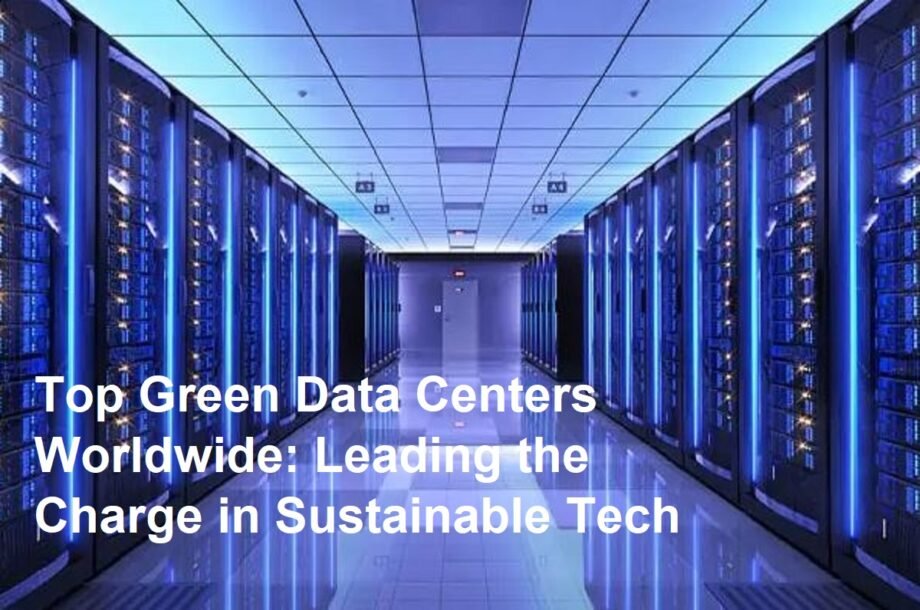Introduction
As technology rapidly evolves, data centers have become the backbone of our connected world, supporting everything from online gaming to cloud services and digital communications. However, data centers are known for their huge energy consumption and subsequent environmental impact. Fortunately, many data centers around the world are taking bold steps to become more environmentally friendly, embracing renewable energy, advanced cooling technologies, and efficient infrastructure. This article explores some of the best eco-friendly data centers globally, showcasing how sustainable practices are transforming the industry.
Why Green Data Centers Matter
Data centers consume vast amounts of electricity, often contributing significantly to carbon emissions. Traditional data centers rely on power from fossil fuels, which leads to global warming and environmental degradation. Green data centers aim to reduce this impact by utilizing renewable energy sources, efficient design, and sustainable operational practices. The goal is to reduce carbon footprints while maintaining optimal performance and reliability.
Leading the Way with Renewable Energy
The most successful green data centers are powered largely or entirely by renewable energy—solar, wind, hydro, or geothermal. These clean power sources dramatically reduce greenhouse gas emissions compared to conventional energy.
For example, the Google Data Centers have reached a milestone of operating on 100% renewable energy through purchasing power from wind and solar farms. Similarly, companies like Microsoft and Amazon Web Services have committed to powering their data centers with renewable energy, investing billions in renewable infrastructure worldwide.
Innovative Cooling Technologies to Save Energy
Cooling consumes up to 40% of a data center’s total energy use. Therefore, environmentally friendly data centers invest heavily in cutting-edge cooling solutions to minimize energy consumption:
- Natural Cooling:Some data centers use outside air or water from nearby sources to cool servers rather than energy-intensive chillers.
- Liquid Cooling:Direct cooling of hardware with liquids is more efficient than traditional air cooling.
- Heat Reuse:Certain green facilities recycle heat generated by servers to warm nearby buildings or industrial processes.
The Facebook Data Center in Luleå, Sweden, is a prime example, leveraging the cold Nordic climate for free cooling, significantly reducing energy use.
Sustainable Building Design and Location
Location plays a crucial role in green data centers. Choosing cooler climates reduces cooling energy needs. Furthermore, sustainable building materials, smart architectural designs, and strict waste management help lower the environmental footprint.
The Switch SuperNAP in Nevada, USA, incorporates solar power and advanced energy management systems, while designs prioritize minimizing land and water use.
Corporate Responsibility and Certifications
Many environmentally responsible data centers pursue certifications like the LEED (Leadership in Energy and Environmental Design) and Energy Star ratings to validate their sustainability credentials. These certifications require meeting rigorous standards for energy efficiency, water conservation, and environmental management.
Tech giants often publicize their sustainability targets and progress transparently, reinforcing trust and accountability with stakeholders.
The Future of Green Data Centers
The push for greener data centers is driving innovation in energy storage, AI-powered energy management, and modular data center designs that further reduce environmental impact. As cloud computing, 5G networks, and IoT applications expand, sustainable data centers will be essential to balancing technology growth with climate responsibility.
Conclusion
The best environmentally friendly data centers in the world demonstrate that it is possible to balance technological advancement with sustainability. By leveraging renewable energy, innovative cooling, smart design, and transparent corporate responsibility, these data centers set a powerful example for the industry. As demand for digital services grows, adopting green data center practices is critical in reducing the environmental footprint of our connected future.









